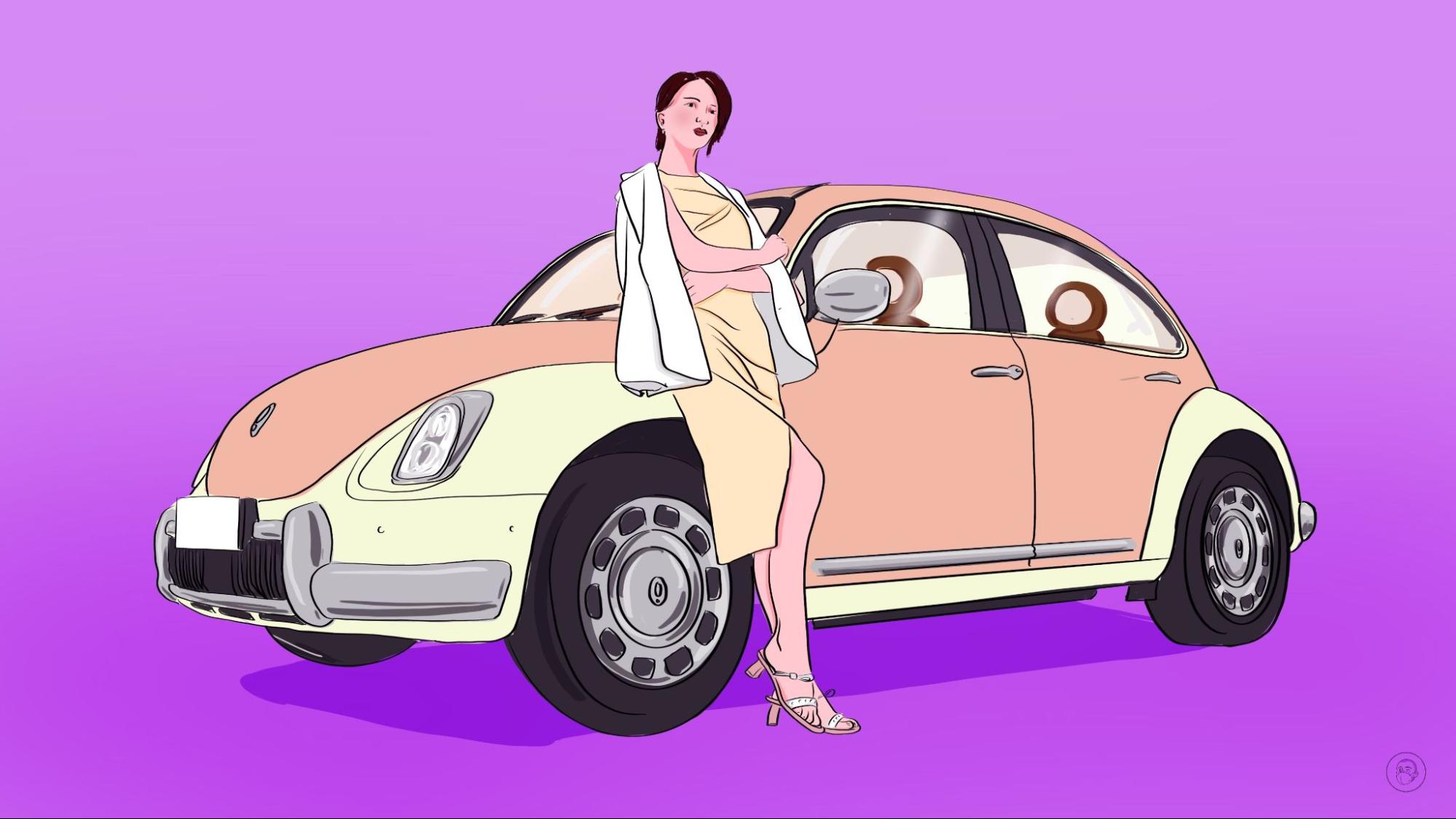Chinese automaker rolls back ‘cars made for women’ strategy after disappointing sales
Two years after Chinese automobile manufacturer Great Wall Motor found its sweet spot by building its entire brand on making “ladies’ cars,” the company now wants to pivot to designing cars for all genders, calling it an “evolution” of its strategy.

When Great Wall Motor (GWM), a leading Chinese automobile manufacturer headquartered in Baoding, Hebei, developed a smallish electric car under its subsidiary brand Ora to meet the segment’s growing demand in 2018, it faced a daunting challenge: The model couldn’t stand out among a plethora of similar vehicles built by both its domestic and foreign competitors. In other words, it didn’t have a unique selling point.
It found one the next year. As its analysis of sales indicated, women were the primary customers of Ora, which consisted of a whole line of affordable new energy vehicles. Since 2020, the company has made women front and center in its showrooms and marketing campaigns, developing a host of women-friendly features in its models.
China news, weekly.
Sign up for The China Project’s weekly newsletter, our free roundup of the most important China stories.
But last month, in an abrupt move, GWM decided to put an end to its women-courting strategy. What went wrong, and do Chinese women really need cars aimed exclusively at them?
“A car brand that loves women more”
The announcement was made during a media briefing in September, where a slew of senior executives at GWM were in attendance. “We are hoping to redefine the branding of Ora,” Tán Jiàn 谭健, the company’s chief technology officer, was quoted as saying by Dòngjiànxīnyánshè洞见新研社, a WeChat public account reporting on business and technology news. “We want to evolve our brand culture further and make it appeal to both men and women.”
The design of future Ora cars will reflect its rebranding efforts, Dǒng Yùdōng 董玉东, CEO of Ora, reportedly said at the meeting. “Our love for female drivers is unchanged, but the definition needs to be broadened from individuals to families,” he added.
The message is a departure from what Ora has been conveying since 2020. Although producing “ladies’ cars” wasn’t in GWM’s DNA — founded in 1984, the Chinese company was originally known for being China’s largest producer of sport-utility vehicles and pick-up trucks — Ora’s first flagship model, R1, introduced in 2018 and priced under 100,000 yuan ($13,833), found unexpected success among female customers, who accounted for nearly 70 percent of its sales at the time.

A full makeover followed. In early 2020, Ora renamed the R1 as “Black Cat” and launched its successor, “White Cat,” which inherited R1’s retro, cutesy exterior look while expanding its color options. The feline theme continued with its introduction of “Good Cat,” a mini EV that hit the market in November 2020. In March 2021, Ora officially announced its ambition to become “a global car brand that loves women the most.” At auto fairs, it provided services like manicure and custom perfume design, along with macarons and desserts.
The rebranding was reflected in designs and car features as well. “Ballet Cat,” Ora’s 2020 model that’s advertised as “an elegant car for women” with a “women-friendly configuration,” has a “Lady Driving Mode” enabled with voice-controlled parking, driver fatigue detection, and a cruise control system that keeps the car a proper distance from vehicles ahead. As if the message couldn’t be any more clear, the car also had a “Warm Man Mode,” which purportedly was designed to ease period cramps with heat.
For a while, the strategy worked. In 2021, Ora sold 130,000 units, delivering a year-on-year growth of 140%. On social media, posts of female owners showing off their Ora cars were not hard to come by, with many of the creators affectionately calling their vehicles “pet cats.”

However, things took a turn earlier this year, when Ora discontinued “Black Cat” and “White Cat,” its best-selling models, due to supply chain woes caused by the pandemic. Meanwhile, “Ballet Cat,” which is significantly more expensive than the previous models, failed to scale up, selling an average of only 5,000 units per month. According to media reports, “Ballet Cat” lost its edge, as other non-female-targeted EVs at the same price point edged them out in utility and functional design.
Designing cars exclusively for women is not new
Ora is not the first automobile brand to try to lure women with ladies-only models, and it’s not the first to see such attempts fall flat. Back in 1955, as the buying power of women grew in the American auto industry, muscle car manufacturer Dodge paved the way in this regard with La Femme, a special edition of its Custom Royal Lancer. Offered in a two-tone pink-and-white paint scheme, with a pale pink vinyl upholstery and Gold Cordagrain trim, the sedan also came with accessories including a matching pink rain cape, handbag, and beauty-related products like compact powder and lipstick.

La Femme was a massive flop. Despite Dodge’s attempt to revive sales the following year with a “queenly purple” paint job, it moved only 2,500 of these feminine-trimmed Royal Lancers before completely discontinuing the model in 1957.
Lest you think modern executives learned from La Femme’s failure, Ford in 2000 showed off a concept Windstar minivan developed with American home appliance company Maytag featuring a compact washer/dryer, microwave, and vacuum in the rear hatch. Two years later, Honda brought the idea to Japan with the Honda Fit She’s, a model drowned in different shades of pink, inside and out.
Outside China, the latest entry in this category came from Spanish automaker Seat, which is part of Volkswagen. In 2016, in collaboration with lifestyle publication Cosmopolitan, the company launched the Seat Mii, a compact four-seater that features a purple or white exterior paint, champagne-hued interiors, door-side mirrors, eyeliner-shaped headlights, and jeweled wheels.
Described by the women’s magazine as a perfect place for “impromptu karaoke performances, last-minute wardrobe changes, dramatic gossip sessions and emergency lunch-hour kips,” the car even promised to make driving less strenuous for women with special rear parking sensors and a “hill hold control” system that could stop the vehicle from rolling back when stationary.

Predictably, Seat attracted a great deal of flak on social media, with critics calling out the car’s gender stereotyped design and patronizing features. “Sure, we all want products that look good and are usable,” according to an article on Refinery29. “But implying that women in particular need something ‘easy to park and drive’ doesn’t exactly help debunk stereotypes, nor does the implication that women value style while men care more about function.”
These errors of the past, however, didn’t yield lessons for Chinese companies. The Chery QQ Ice Cream, an all-electric micro hatchback rolled out by Chery Automobile in 2021, was specifically marketed toward women, with an array of funky colors available for the exterior. Still believing in the outdated “pink vs. blue” dichotomy, Dongfeng and Hozon Auto both pinked up their cars in special editions tailored for the female demographic. Taking a different approach, Wuling Motors regularly highlights its female customers by exhibiting customized, dolled-up versions of its mini EVs at auto shows.
But none of them have gone as far as making an entire brand about women. And that is, according to some industry observers, the ultimate reason for Ora’s failure. “Once a product is firmly associated with women, that basically means it can never be marketed to men,” Shào Jǐngfēng 邵景峰, the global design director of Shanghai-headquartered SAIC Motor, China’s largest automaker, once told the media.
Is there really a market in China for ladies’ cars?
In theory, creating a “woman’s car” could be a profitable business in China. According to the Ministry of Public Security, China had 440 million drivers at the end of 2021, with more than 33 percent of them being women, up from 28 percent in 2014. A stronger case can be made when the purchasing power of Chinese women is taken into account: A 2019 report by Accenture, an information technology company, revealed that China is home to more than 400 million female consumers aged 20 to 60, who account for more than 10 trillion yuan ($1.38 trillion) worth of consumption every year.
In the auto market, Chinese female drivers’ spending on cars already surpassed that of their male counterparts in 2020, with nearly 9.73 million cars estimated to be sold to women in 2026. When it comes to the future of transportation that is new energy cars, reports show that women in the household are the ones holding executive sway on converting to all-electric family vehicles.
At this point, it’s well established among Chinese car makers that overlooking women would be to their financial peril. And for those hoping to court an increasingly female-centric consumer base that boasts more financial muscle and purchasing independence than ever before, they have to realign their marketing and design practice to a certain degree.

Ora’s cat-themed EVs and other Chinese “ladies’ cars” aren’t totally off the mark. Surveys have shown that women are less likely to choose masculine vehicles like high performance sports cars and trucks. Instead, they tend to gravitate toward SUVs and sedans, which are the exact types of models that have been marketed to Chinese female drivers in the past few years.
But that seems to be where market research stopped and the obsession over stereotypical “female” interests — such as the color pink and parking assistance — entered the picture.
Or, perhaps, the need for female-targeted cars is completely made-up. In a 2022 survey of Chinese female drivers, Chēyún 车云, a news portal focusing on the Chinese automobile sector, found that the top features women look for when buying a car are auto-door locking, remote control of air conditioning, and hands-free access to the trunk — all of which, incidentally, are also what men want.






